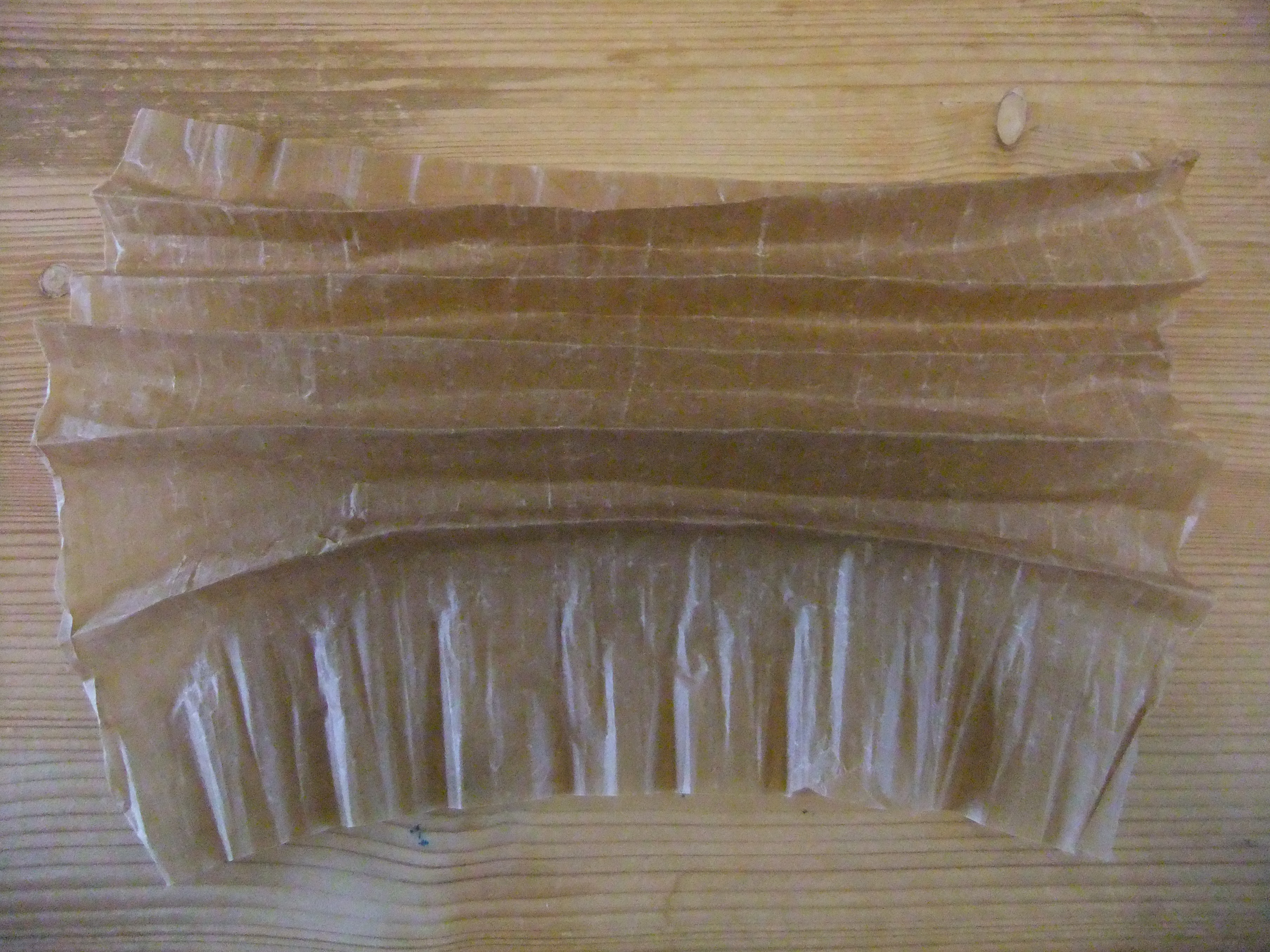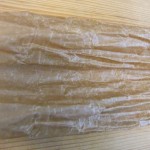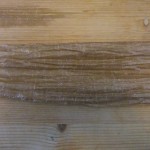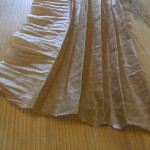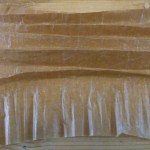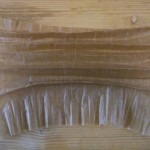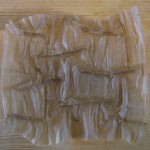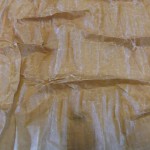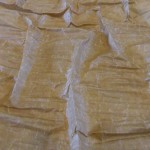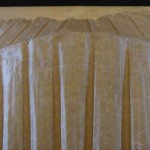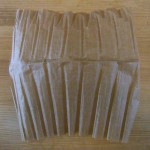Introduction
This exercise looks at crumpling paper and other materials in a linear way (as opposed to the more random technique in exercise 5). Further moulding extends the range of shapes that can be created.
i) Linear ribs – Parchment paper
- Exc 6 – Linear rib 01
- Exc 6 – Linear rib 02
A series of fine ribs was created by rolling the baking parchment paper into a narrow cylinder (I rolled around a rolling pin). After removing the rolling pin, fine parallel crease lines were created by smoothing my hands up and down the paper, squashing the paper but keeping the lines as straight as possible. This process was repeated until the paper was densely creased. The lines held well in the baking parchment.
ii) Long ribs – Parchment paper
- Ex 6 – Long ribs 01
- Ex 6 – Long ribs 02
- Ex 6 – Long ribs 03
The creased paper was then folded perpendicular to the creases to create new, long rib shapes.
iii) Short scattered ribs – Parchment paper
- Ex 6 – Scattered ribs 01
- Ex 6 – Scattered ribs 02
- Ex 6 – Scattered ribs 03
After smoothing and re-creasing the paper, I pinched small, uneven ribs across the surface.
iv) Pleats – Parchment paper
- Ex 6 – Pleated rib 01
- Ex 6 – Pleated rib 02
I incorporated the pleating technique along the lines of the paper and a curved ridge down the centre.
v) Paper modelling – parchment paper
For the last part of this exercise I took the inspiration from fungi in our garden and used one of my research artist (Vincent Floderer’s) techniques to recreate the fungus using parchment paper.
Thoughts and conclusions
The baking parchment paper was quite successful, holding its shape well. The glossy surface on one side gave interesting highlights and shadows. The fine liner crumpling made the paper surprisingly strong and sculptable, similar to the way in which crepe paper is made I assume.
My preferred piece from this exercise was the scattered rib. I can see this as a good way to interpret textures such as bark, slate and rocks. Viewed from the reverse (or folded inwards rather than outwards) it would be an interesting way to translate rocks, cobbles or pebbles.
Future ideas
Other media I would like to experiment with for this technique would be foils, crepe and tissue papers and fabrics. I anticipate that it might be necessary to stitch fabrics to hold the creases in place, perhaps a smocking technique would be useful for this (note to self: find a friend who wouldn’t mind sharing their pleater!).
For these exercises I deliberately worked in monochrome to maximise the impact of the shaping and not distract from it with colour. However, there is so much scope to combine colour, dye and stitch with this technique and is something I will be trying.
